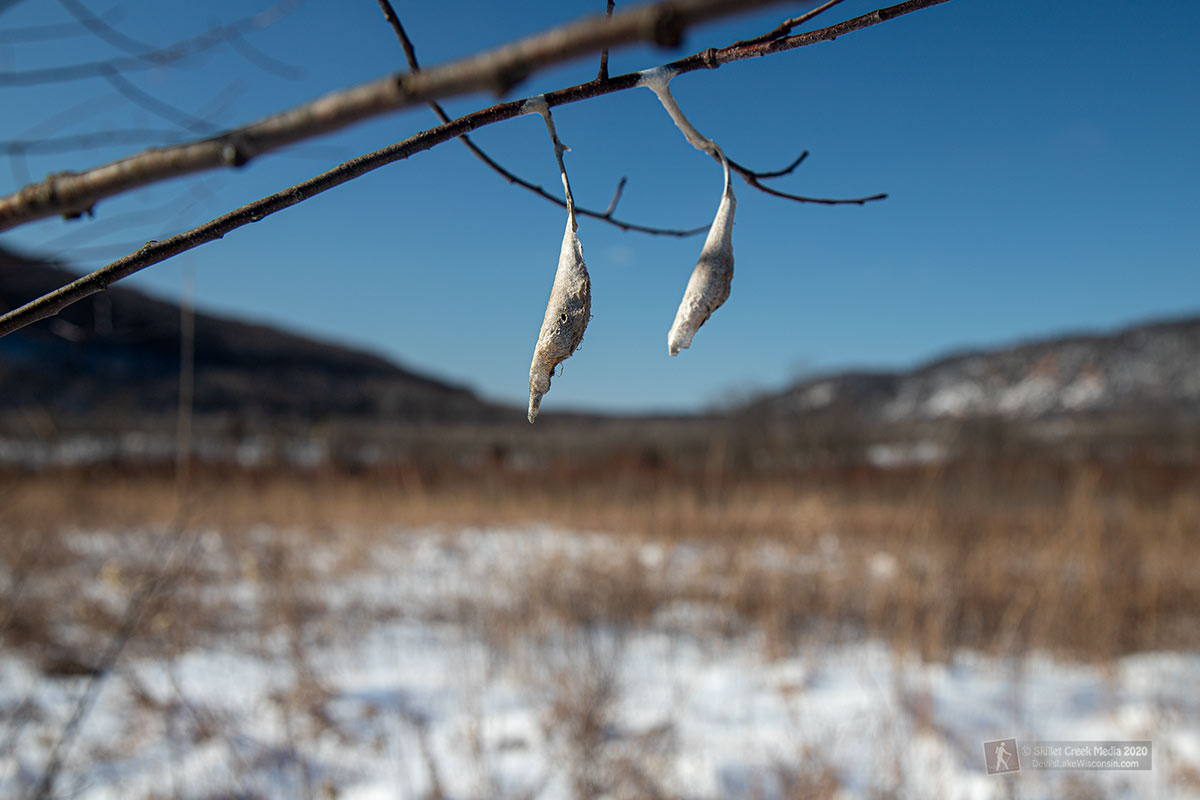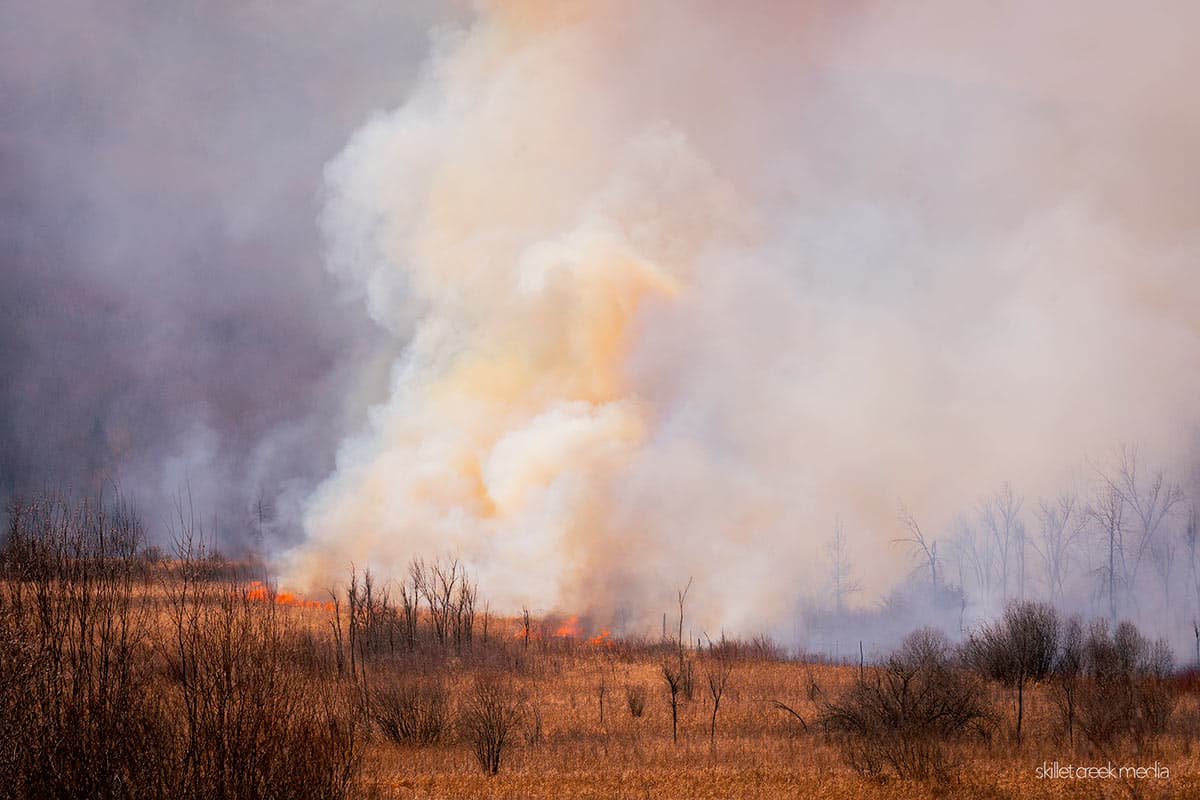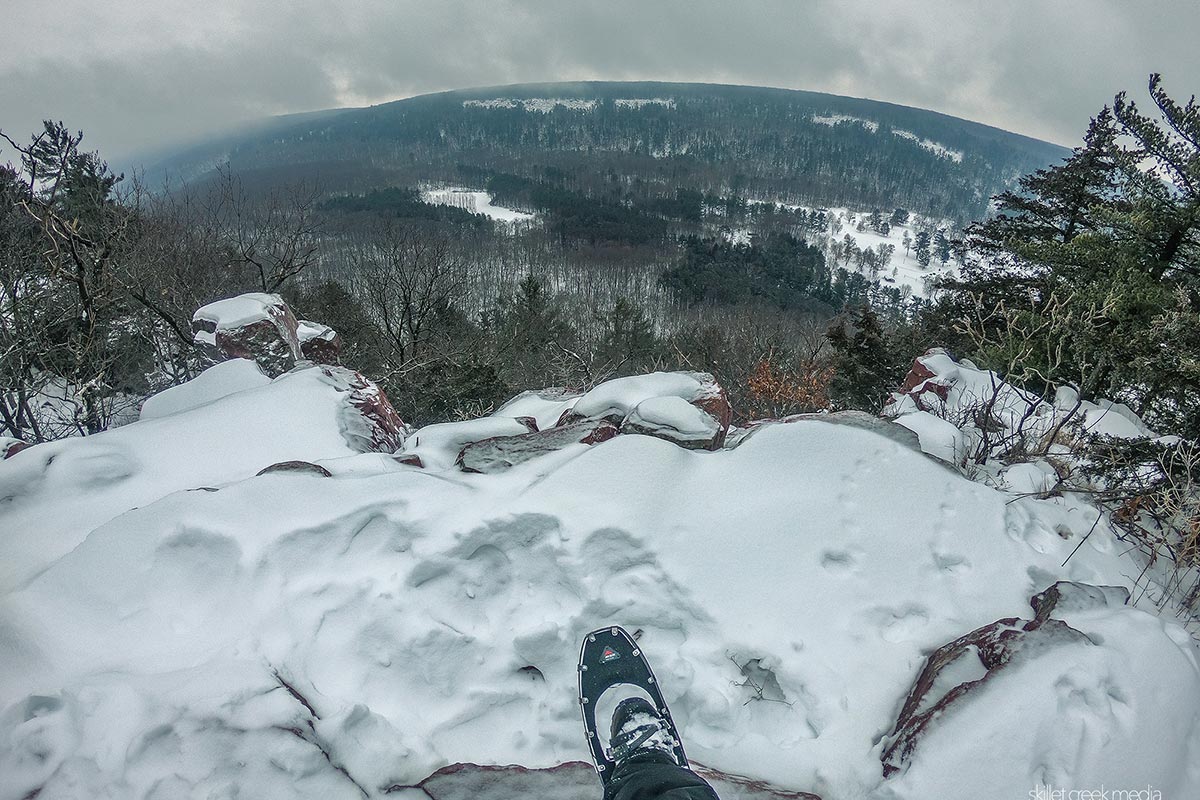Yesterday, March 18th, a prescribed burn was carried out on Devil's Lake State Park's Roznos…

I like to take a moment here and there to share with you some of the critters that make Devil’s Lake State Park their home. While out snowshoeing (And enjoying the sunshine!) a couple of days back, we noticed a couple of trees decorated with small, white, paper-like ornaments. These are the cocoons of Promethea Moths, part of a small family of Giant Silk Moths.

Promethea months are fairly common all over the country from the east coast to the great plains. We’ll see them quite often at Devil’s Lake State Park as well. Heck, they’re easy to spot too because they’re BIG. Well, big for moths anyway. An adult wingspan can get up to about 4 inches! That’s about as wide as your hand!
When it comes to telling the males and the females apart, first look at the color. Very generally the females are reddish-brown and the males are darker to almost black. But sometimes that doesn’t work, so next, you can look at the antennae. The males tend to have big, broad comb-like antennae, while the female’s are quite a bit smaller.
Of course, in the winter months, you won’t find any Promethea moths flying around. But it’s not hard to spot their cocoons hanging from bare tree branches this time of year! (As you can see here.) The caterpillar will usually select a curled leaf for it’s home. It first reinforces the leaf attachment to the branch, then will wrap the leaf around itself to add strength and protection to the cocoon.

Interesting!
Learn More – Ref;
Featured Creatures – University of Florida
Callosamia promethea – Wikipedia
Giant Silk Moths – UW Milwaukee
Giant Silk Moths – Nature North

For nearly 2 decades the Skillet Creek blog has focused on 3 main goals; To inspire you to visit and explore the Devil’s Lake region, to help you get the most your visit by sharing tips, events, and other helpful information. Lastly to advocate for our environment & wildlife and talk about how we can keep our natural areas amazing now and into the future! That last goal can sometimes cause controversy, but it’s the only way we can accomplish the first two. – Derrick Mayoleth, Owner.



